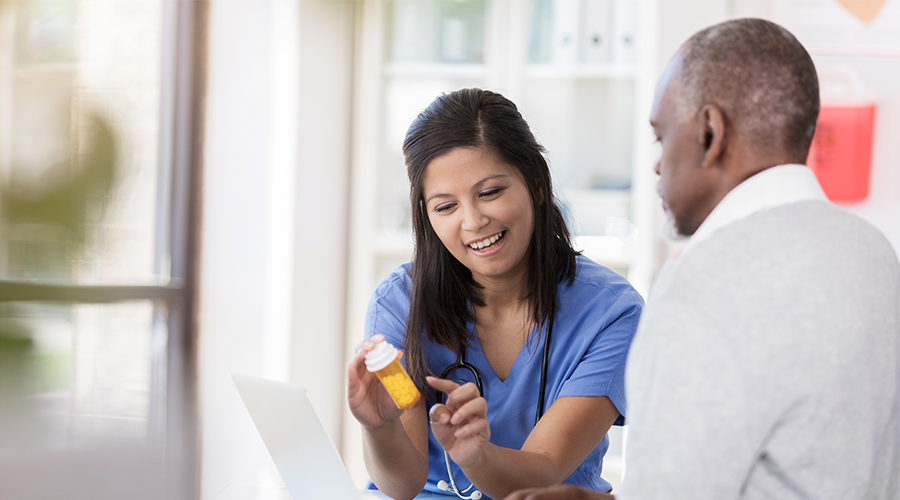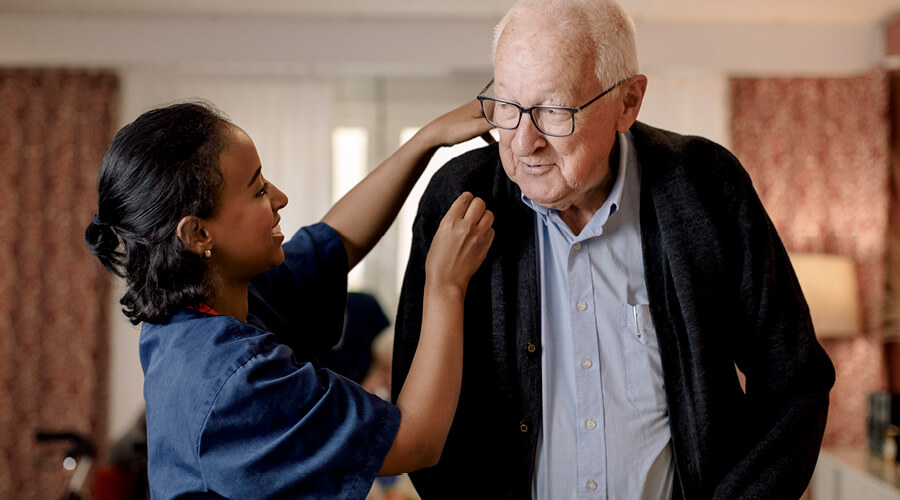While some falls at home are caused by health-related issues such as poor eyesight, medication interactions and weakened muscles, many falls happen because of the set-up of your home and are easily preventable.
The National Council on Aging and the Centers for Disease Control and Prevention note that falls are the leading cause of both fatal and nonfatal trauma-related hospital admissions among older adults.
One in four Americans ages 65 and older falls each year and 20% are injured. More than 95% of hip fractures are caused by falls. Every 20 minutes in the U.S. an older adult dies as the result of a fall.
These statistics remind us why it is so important to be aware of ways to decrease your falling risk.
“It’s important to have honest dialogue with your physician about symptoms of depression, not feeling well or feeling slowed down,” says Martha Frohwein, director of therapy and rehabilitation at the Good Samaritan Society.
Often, people are more likely to fall if they’ve noticed a decline in their mobility.
“If that’s the case, they should get involved in an exercise class or seek a referral to therapy to increase their strength, balance and confidence with movement,” Martha says.
Additional ways you can decrease your risk of falling at home:
- Speak up – Talk openly with your health care provider about fall risks and prevention. Ask your doctor or pharmacist to review your medicines.
- Keep moving – Begin an exercise program or class to improve your strength and balance. Attend a local falls screening event, if available, or seek a referral for therapy if you notice changes in your strength and balance.
- Get an annual eye and hearing exam – Replace eyeglasses as needed. Have your hearing checked and use hearing aids if needed.
- Make your home safer – Remove clutter and tripping hazards.
Choosing the right footwear:
If you struggle with balance, skip the fancy shoes.
- Make sure shoes have sturdy, nonskid soles
- Wear snug shoes so your feet aren’t sliding around
- Make sure there is room for an orthotic or insole if needed
- Avoid high or narrow heals, loose shoes and flip flops
Check out our tips for improving the safety of every space in your home.
Bedroom- Keep a light source near your bed.
- Sit down to get dressed.
- Keep loose items off the floor.
- Keep CPAP machines, cords and tubing on the opposite side of where you get in and out of bed.
- Keep objects off steps.
- Add handrails on both sides of the stairs.
- Install anti-slip strips on each stair or make sure the carpet is securely attached.
- Install night lights along the way from the bedroom to the bathroom.
- Use a shower chair and handheld shower head while bathing.
- Install grab bars near the toilet and shower.
- Put a riser seat on the toilet.
- Always use an assistive device, if needed, from bedroom to bathroom.
- Move things so they’re within easy reach and waist height.
- Use dining chairs with armrests and no wheels.
- Don’t clean with a high-gloss wax floor protector.
- If you must use a step stool, use one with a bar to hold on to. Never use a chair as a stool.
- Move cords and other objects out of walkways.
- Use a cushion or a seat riser if your chair is too low to easily stand from.
- Keep frequently used items within reach.
- Remove throw rugs.
- During winter, use ice melt on steps and walkways. Keep a container with a scoop close to the door.
- Install railings on either side of outdoor steps.
- Clear the walkway of any clutter.
Remember pets and small children can pose tripping hazards or knock you off balance.
- If you are visiting loved ones who have pets, they may need to be secured.
- Ask loved ones to remove toys and games from the floor and stairways.
Download these tips and consider printing and sharing them with the caregivers and family members in your life.




